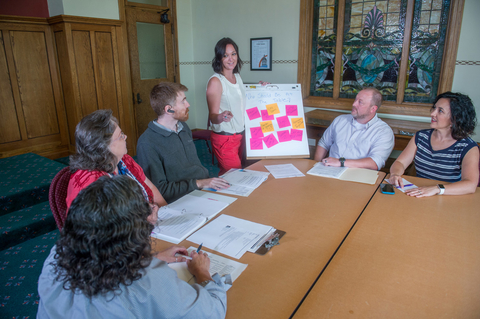
As groups seek to solve problems together, productive discussions are fundamental. Using working agreements is an early step to create meetings with clear expectations for involvement. When combined with skilled facilitation, good meeting design and thoughtful involvement by participants, working agreements help make meetings more effective.

Tip: Create working agreements
In public meetings, forums, hearings and other group settings, a productive discussion is critical. Working agreements help a group start and maintain a productive discussion. Working agreements clarify expectations for behavior in the meeting.
Working agreements are a short list of expectations to guide how a group works together. They are sometimes called ground rules, guidelines, or expectations. While many public organizations use parliamentary procedure as a form of working agreements, such formal practices may not be sufficient or appropriate for guiding public discussion.
Effective working agreements help:
Here are suggestions for working agreements or ground rules that can be especially helpful for public meetings:
Groups can create working agreements in advance of the meeting, or with the group at the meeting. The group's size and purpose can determine how working agreements are set.
Once working agreements are clarified, leaders should confirm with the group that these practices will guide the discussion. The group's agreement allows the leader or a group member to directly address an issue when a guideline is not followed.
Having nine or fewer working agreements helps the group more easily remember and support them. Post agreements on a handout, table tent or flip chart so that they are readily available. If the group meets multiple times, repost agreements at each meeting to orient new participants and remind others.
Plus sign (+) if content is closed, 'X' if content is open.Boyce, K. (2002). Ground rules for public participation. Fact sheet. St. Paul, MN: University of Minnesota Extension
Justice, T., and Jamieson, D. (1998). The complete guide to facilitation. Amherst, MA: HRD Press.
Scheffert, D., Anderson, M., Anderson, S., et al. (2001). Facilitation resources, volume 4: Managing group interaction. St. Paul, MN: University of Minnesota Extension.
Author: Lisa Hinz, Extension educator, leadership and civic engagement